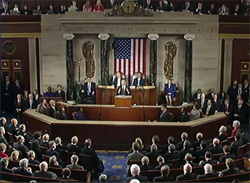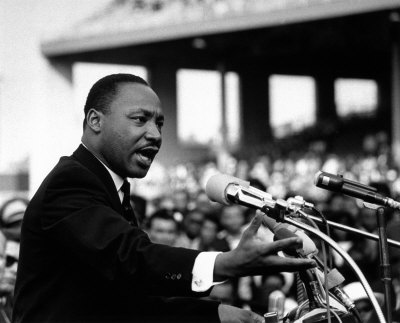 With the end of the year comes the end of the politco circus for this year. It’s been a hilariously depressing year of posturing, antagonizing, and defaming. The really fun part is watching them try to out lie one another. It’s nice to hope that we have hit the lowest of the low in our political environment but it’s hard to say. I’d like to think we can only get better from here, but to make this dream a reality, each one of us can take a few moments and forge our own Political New Year’s Resolutions.
With the end of the year comes the end of the politco circus for this year. It’s been a hilariously depressing year of posturing, antagonizing, and defaming. The really fun part is watching them try to out lie one another. It’s nice to hope that we have hit the lowest of the low in our political environment but it’s hard to say. I’d like to think we can only get better from here, but to make this dream a reality, each one of us can take a few moments and forge our own Political New Year’s Resolutions.
With any luck, we all can pick a few which fit ourselves and our views in order to make us better people, better citizens, and better equipped to deal with our poisoned political environment.
Treat Each Other with Respect
It may seem simple, but it may be the hardest resolution. We all have our own political opinions and we want to share them. We also have our issues with other political views and tend to look down on people who don’t agree.
The unfortunate truth is that we are not smarter than those who disagree with us, nor are we morally better than those that hold different opinions.
You don’t have to agree with other people’s political views, but if you accept that their opinion is just as valid as yours, you may have a chance to intelligently debate and discuss both sides. Perhaps we as constituents might be able to do what our representatives cannot: either agree to respectfully disagree, compromise, or even come to a solution that suits both sides.
Being one of unbending principles and ideas is NOT respectful. Without the ability to change, adapt and grow, political ideas grow stagnant, time and money is wasted, and the problems that face us as Americans do not get solved.
Stay Politically Informed
This resolution has several facets but I find this to be an important issue which undermines one’s own ideas and opinions on all manner of political topics.
It’s easy to say we don’t have time to keep up with politics. It’s true we are very busy and the current political environment is incredibly complicated, and even politicians can’t keep up with everything. Career politicians have advisors to tell them their opinions daily. They also have lobbyists to try and push their agendas. If politicians cannot stay fully informed, and cannot always get both sides of the story, how does the average American person stay informed?
First, determine the top 6 issues that affect you directly or you are truly passionate about. Ignore the other issues that hold little interest to you or have no impact on your life. I know you may care about more political issues, but you can’t stay fully informed, so focus only on your top political topics. If you want to add a couple more or take a few off the list that is up to you. The point is to focus on what is most important to you. To not be distracted from issues you are passionate about, to those you aren’t. Limiting your focus accomplishes two things: 1.) Makes sure you are knowledgeable about what is most important to you. 2.) Allows you to vote knowledgeably on the issues that are most important to you.
So you have narrowed down your topics, but you can’t add more hours to your day to research these things. We can’t add hours to the day, but we can squeeze in a little more education or substitute our time with some knowledge. If you usually listen to music on your commute to work or school, try listening to the news instead. Get informed for the day and discuss current events with co-workers. You can also install a few apps on your phone to browse news stories while you are waiting in line, on break, or at lunch.
It’s important to get you news and information from a variety of sources. If you watch two hours of news a night but it is always the same channel or the same website you are doing yourself a disservice. Free media in this country is nearly extinct, and all the remaining news sources are corporately or privately driven. This means they inject their own political bias onto their stories. Though frustrating, it’s reality. So pick a few different news sources and rotate between them. More variety in your news sources will greatly improve your real knowledge of politics and world events. The very same news story will be presented differently depending on who is telling it. Do yourself a favor, and work to filter the bias out yourself by attaining your knowledge from many different sources.
Be Politically Open Minded
It’s difficult to know that sometimes we are wrong. The current political environment is so unforgiving that people cannot admit to being wrong. It’s refreshing when someone actually says they had the wrong idea. We can only grow as people and a society by acknowledging our mistakes and growing, evolving, and progressing, because of our mistakes, not in spite of them.
It’s good to keep this concept in the back of your mind when discussing politics. Unlike math, political ideas, laws, and legislation are not absolute. They affect different people in different ways at different times. Our opinions can be right one day and wrong the next. That is OK!
The most important thing is to have an open mind. Be open to different ideas, perspectives, and ways of thinking. An open mind enhances political discourse and will ultimately drive us all towards political solutions that are the most advantageous for all of us. But we will never get there unless each and every one of us has an open mind to new ideas and ways of achieving more for us as a country politically.
Allow Others Their Time
We all have our own political ideas and beliefs. Some want the world to know their ideas and some are afraid to share. Those who are afraid to share may fear persecution or intolerance. They may simply not want to risk a friendship by stating their political ideas or beliefs. It’s possible the quiet, shy person who is afraid to open up or is constantly interrupted has a startling idea for change.
It can be hard to let someone express their ideas or thoughts on politics. We often are so busy thinking of what we want to say next that we don’t actually listen to the other person. Sometimes we can’t contain our thoughts and we interrupt. These interruptions can derail the point or even burst into counter points and arguments. Soon the person who wanted to share their fabulous idea is lost in the discourse and ricocheting of these kinds of conversations. This kind of behavior gains us nothing.
It’s hard to wait your turn, as silly as that sounds. But it’s vitally important to allow the time and attention required to fully listen to and absorb an idea. Keep any counter points you have to yourself and save them for your turn to speak when the time comes.
This is one New Year’s Resolution I am going to work very hard on this year. We all deserve respect and attention when we are presenting our ideas. I would hope others would offer this to me and I will work hard this year to offer it to them.
Should you find yourself involved in conversations where this is impossible or realize the discussion is on the verge of breaking down, step in and offer some more solid rules to the discussion. It might sound silly, but if some ground rules are followed, people of vastly different opinions and ideas can discuss their sides fairly. When laying out the rules, the first one should be no interrupting. You might want to decide on a procedure, such as a round robin, where one person can speak their piece for a set amount of time and then it’s the next person’s turn. This frees up the listeners to really pay attention to what they are hearing versus trying to find a point to jump in and dispute. Another important rule would be to always respectfully disagree.
Contact your Representative
Do you agree or disagree with a certain bill? Contact your representative and give your opinion. Backing up your opinion with a story that tugs at heartstrings is a bonus. They may even use your story on the campaign trail! You are a constituent. If you want representation, you need to express yourself. If you want your representative to compromise to get a problem solved, tell them so.
Get Involved

By Popular Demand tackles two important issues--increasing political participation and restoring trust in government--that are critical to the future of American democracy.
If you have some time, local campaigns could use you. If you have some money, donate to candidates or to causes you care about. They hire lobbyists to do the sweet talking for them. Get involved in some way. Whatever skills you have can probably be used.
Make Next a Better Year
The solution to our country’s problems is not in average Americans giving up and dismissing these hard conversations and decisions. The solution comes from more of us being more involved than we are now. It is truly sad when the “flagship” of worldwide democracy celebrates that we had a record setting turnout of 40% of registered voters. It does work to the advantage of those politicians that want to disenfranchise the American people from their own country. Then they can give themselves raises, months of vacation, free health care, and earmark bill after bill awarding millions in contracts to their friends and lobbyists.
Resolve to do some of these, all of these, or anything else you can think of. Let’s bring American politics back to a level of decency and functionality we once enjoyed. Politics in America can be worse, and they can be a lot better. You and I can make sure that politics in America will be better this coming year, one American patriot at a time.
This is the fifth part of a multiple part series taking a deep dive into our current political and economic crisis in America. Partisan politics, unfettered corporate spending and recklessness along with a shift in our social acceptance of debt, is having far reaching and potentially devastating affects on our way of life, on the American Dream. With each installment we will take a closer look at some of the major pieces of this very complex puzzle and try to understand them and bring them into perspective. Use this opportunity to take a broader look on the political and social economic state of America and how each of us, as a small pieces of the puzzle, can make a difference.
 This is the forth part of a multiple part series taking a deep dive into our current political and economic crisis in America. Partisan politics, unfettered corporate spending and recklessness along with a shift in our social acceptance of debt, is having far reaching and potentially devastating affects on our way of life, on the American Dream. With each installment we will take a closer look at some of the major pieces of this very complex puzzle and try to understand them and bring them into perspective. Use this opportunity to take a broader look on the political and social economic state of America and how each of us, as a small pieces of the puzzle, can make a difference.
This is the forth part of a multiple part series taking a deep dive into our current political and economic crisis in America. Partisan politics, unfettered corporate spending and recklessness along with a shift in our social acceptance of debt, is having far reaching and potentially devastating affects on our way of life, on the American Dream. With each installment we will take a closer look at some of the major pieces of this very complex puzzle and try to understand them and bring them into perspective. Use this opportunity to take a broader look on the political and social economic state of America and how each of us, as a small pieces of the puzzle, can make a difference. This is the third part of a multiple part series taking a deep dive into our current political and economic crisis in America. Partisan politics, unfettered corporate spending and recklessness along with a shift in our social acceptance of debt, is having far reaching and potentially devastating affects on our way of life, on the American Dream. With each installment we will take a closer look at some of the major pieces of this very complex puzzle and try to understand them and bring them into perspective. Use this opportunity to take a broader look on the political and social economic state of America and how each of us, as a small pieces of the puzzle, can make a difference.
This is the third part of a multiple part series taking a deep dive into our current political and economic crisis in America. Partisan politics, unfettered corporate spending and recklessness along with a shift in our social acceptance of debt, is having far reaching and potentially devastating affects on our way of life, on the American Dream. With each installment we will take a closer look at some of the major pieces of this very complex puzzle and try to understand them and bring them into perspective. Use this opportunity to take a broader look on the political and social economic state of America and how each of us, as a small pieces of the puzzle, can make a difference. This is the second part of a multiple part series taking a deep dive into our current political and economic crisis in America. Partisan politics, unfettered corporate spending and recklessness along with a shift in our social acceptance of debt, is having far reaching and potentially devastating affects on our way of life, on the American Dream. With each installment we will take a closer look at some of the major pieces of this very complex puzzle and try to understand them and bring them into perspective. Use this opportunity to take a broader look on the political and social economic state of America and how each of us, as a small pieces of the puzzle, can make a difference.
This is the second part of a multiple part series taking a deep dive into our current political and economic crisis in America. Partisan politics, unfettered corporate spending and recklessness along with a shift in our social acceptance of debt, is having far reaching and potentially devastating affects on our way of life, on the American Dream. With each installment we will take a closer look at some of the major pieces of this very complex puzzle and try to understand them and bring them into perspective. Use this opportunity to take a broader look on the political and social economic state of America and how each of us, as a small pieces of the puzzle, can make a difference.


 The President of the United States of America, Barack Obama, gave his 2012 State of the Union Address. Whether you love or hate President Obama, there is no denying that he knows how to give a great speech. President Obama is a very charismatic speaker using a great amount of intelligence and elegance when he speaks. Whether you agree or disagree with what he said last night does not change the fact that he is great at addressing America.
The President of the United States of America, Barack Obama, gave his 2012 State of the Union Address. Whether you love or hate President Obama, there is no denying that he knows how to give a great speech. President Obama is a very charismatic speaker using a great amount of intelligence and elegance when he speaks. Whether you agree or disagree with what he said last night does not change the fact that he is great at addressing America. Martin Luther King Jr. Day is coming up, which gives us a chance to reflect on how far we have come as a society, and remember those who worked tirelessly for the betterment of us all. Martin Luther King Jr. is probably the most recognizable figure in the American Civil Rights movement. He brought attention to race issues in the 1960’s, rallying citizens to end racial segregation by use of non-violent protest. He also worked to end poverty and bring about an end to the Vietnam War, before he was assassinated in 1968.
Martin Luther King Jr. Day is coming up, which gives us a chance to reflect on how far we have come as a society, and remember those who worked tirelessly for the betterment of us all. Martin Luther King Jr. is probably the most recognizable figure in the American Civil Rights movement. He brought attention to race issues in the 1960’s, rallying citizens to end racial segregation by use of non-violent protest. He also worked to end poverty and bring about an end to the Vietnam War, before he was assassinated in 1968.